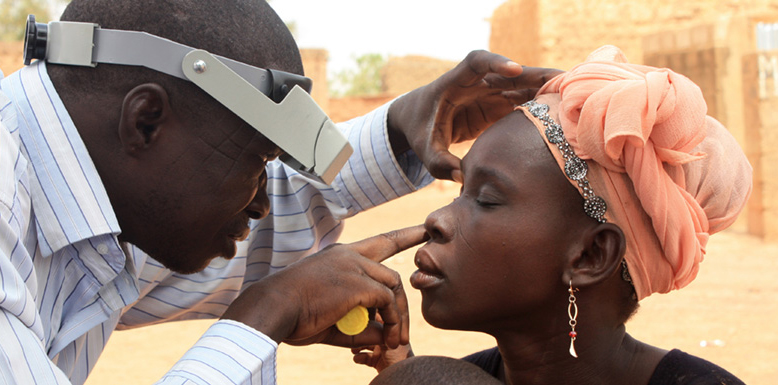 |
| The massive scaleup of a global trachoma elimination program and overall socioeconomic development has dampened the infection’s impact in recent years. Photo: CDC. Click image to enlarge. |
An estimated 5.5 million people worldwide are bilaterally blind or have moderate to severe vision impairment due to corneal opacity subsequent to infection by Chlamydia trachomatis. It’s one of the top five causes of blindness worldwide, yet the global prevalence, regional differences and risk factors are unclear. In a new study, researchers provided global estimates of the prevalence of corneal blindness and vision impairment in adults aged 40 and older and examined the burden by age, gender and geographic region from 1984 to 2020.
The global prevalence of blindness due to non-trachomatous corneal opacities in those 40 and older was 0.08%, while moderate to severe vision impairment was 0.13%. There was a significant increase with age, particularly in those 80 and older. This may be a cohort effect, the authors noted, as this age group typically has more trachoma, vitamin A deficiency and onchocerciasis and may have experienced cataract surgery when complications leading to corneal edema were more common.
“In addition, they had little to no access to eyecare services to prevent or treat corneal blindness,” the authors noted in their paper, published in the journal Ophthalmology. “As conditions improved, succeeding generations benefited. There is also the issue that the denominators for those aged 80 and older are smaller than in other age groups, and cases of blindness or moderate to severe vision impairment have a bigger impact on the rates.”
The risks of blindness and moderate to severe vision impairment from infectious sources other than C. trachomatis were low in Europe and Latin America compared with Asia, Africa and the Middle East, where the ratio was four- to eight-fold higher. “This disparity may result in part from diseases that affect the cornea that are rarer elsewhere in the world, like trachoma, onchocerciasis and vitamin A deficiency,” the authors explained. “It may also represent lack of access to care for corneal diseases.”
Blindness and vision impairment due to trachoma have an even greater disparity when comparing the African/Middle East regions to others, with over an eight- to-14-fold increase in prevalence rate there vs. the rest of the world. “This is predictable as most countries with trachoma are now confined to Africa, and the majority of cases now are in currently endemic countries,” the authors explained.
Trachomatous corneal opacity blindness is declining over time, likely due to the massive scaleup of the global trachoma elimination program and overall socioeconomic development, according to the authors. Surgeries that reverse trichiasis and prevent corneal opacities are increasing, and by reducing the burden of active trachoma, fewer children and young adults would be exposed to infection that leads to scarring which could cause trichiasis.
“This is consistent with some of the age-specific patterns of trachomatous corneal opacity blindness and moderate to severe vision impairment observed, which in the Asian regions are almost exclusively found in the oldest age groups now, with very few cases in those under age 70.”
Lastly, trachomatous corneal opacity blindness and moderate to severe vision impairment increased with age and female sex. “Women have two- to four-times the rate of trichiasis compared with men, and we find a rate ratio of 2.5- to 3.5-times the rate of severe vision loss and blindness due to trachomatous corneal opacities in women, globally,” the authors wrote. “This gender inequity in numbers with vision loss due to trachomatous corneal opacities is likely to persist even in the presence of surgical programs that cover men and women equally. The inequity speaks to the need to ensure high coverage of services to women by reducing barriers that are specific to them.”
Wang E, Kong X, Wolle M, et al. Global trends in blindness and vision impairment due to corneal opacity 1984-2020: a meta-analysis. Ophthalmology. March 15, 2023. [Epub ahead of print]. |


